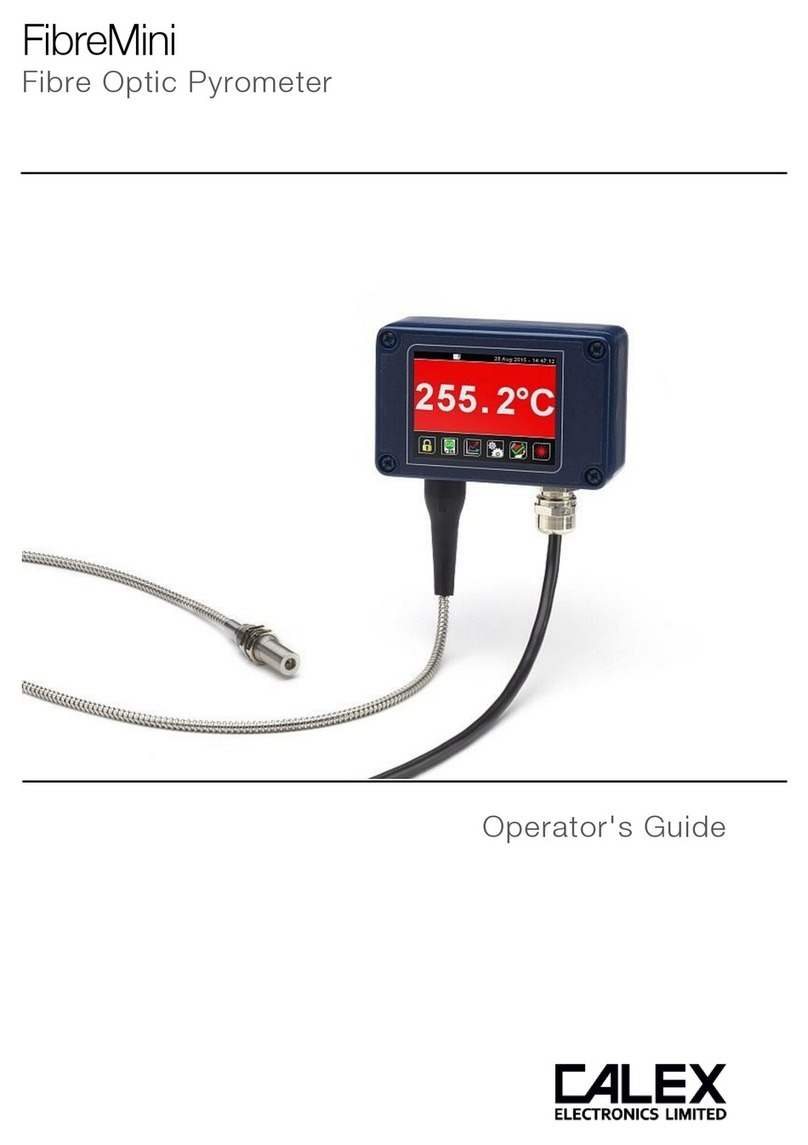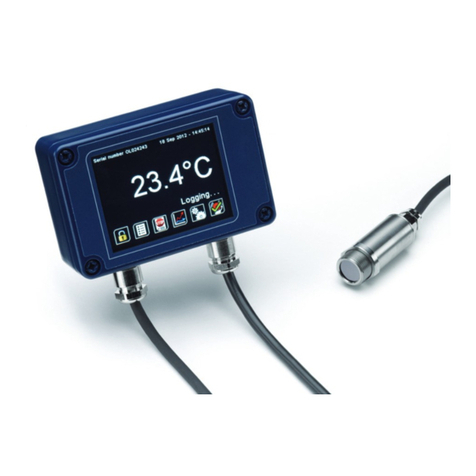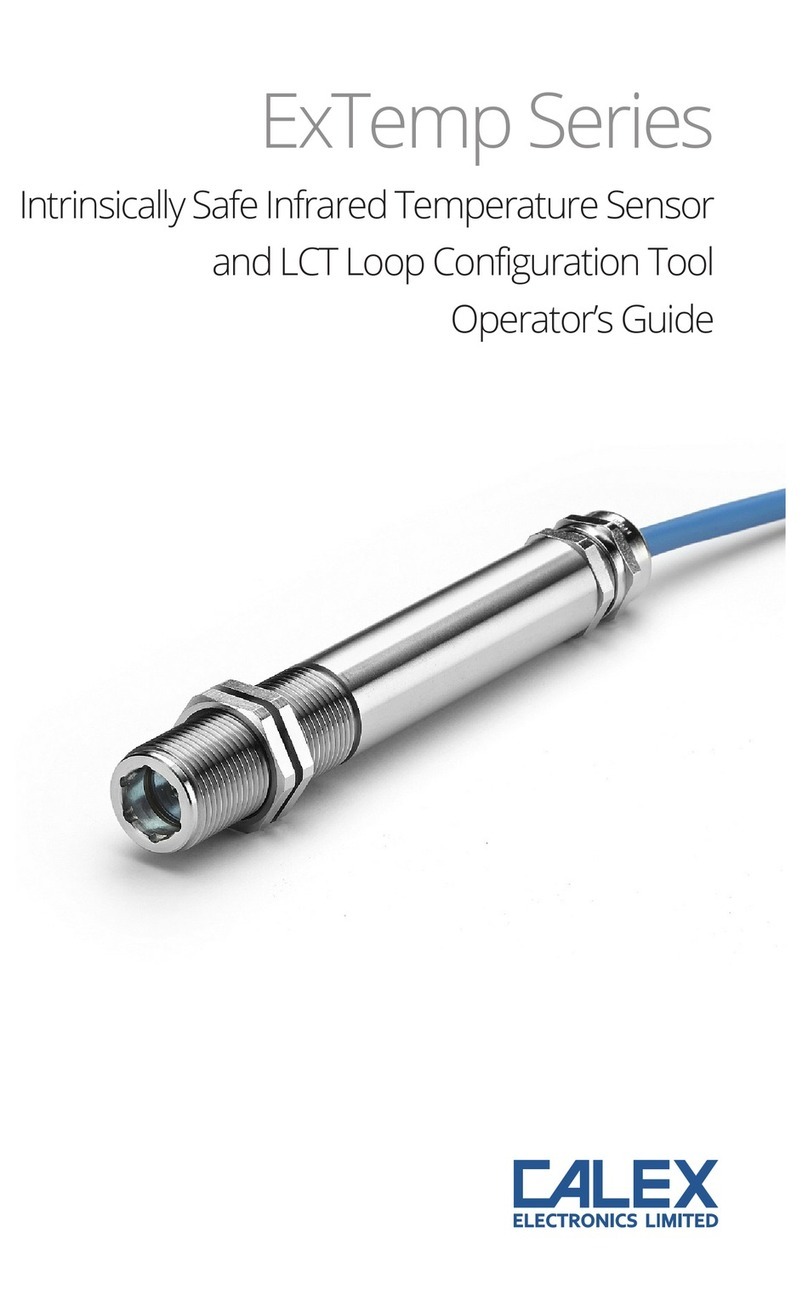
CONFIGURATION
Menu Setting Description
Emissivity Emissivity
Setting
Enter the emissivity setting (between 0.2 and 1.0). The
emissivity setting should match the emissivity of the target
surface. This can be determined experimentally by
comparing measurements with a trusted contact probe,
or estimated using an emissivity table.
Non-reective non-metals, such as rubber, foods, thick
plastics, organic materials and painted surfaces, generally
have a high emissivity, around 0.95. This is the default
setting.
Bare, clean metal surfaces can have a very low emissivity,
and are often dicult to measure accurately. If possible, a
measurable area of the surface should be painted or
coated to reduce reections and increase the emissivity.
Reected
Energy /
Reected
Temperature
In most applications, the target surface has the same
surroundings as the sensor (for example, it is in the same
room). In this case, Reected Energy Compensation
should remain Disabled for an accurate measurement.
This is the default setting.
However, if the sensor is positioned outside an oven or
furnace, with the target object inside, the reection of the
hot furnace interior can aect the measurement. In this
case, Reected Energy Compensation should be Enabled
and Reected Temperature should be set to the
temperature inside the oven or furnace.
Filtering Filtering settings are applied to the sensor’s voltage and alarm outputs.
They are optionally applied to the temperature display too (see Settings -
Display).
Average
Period
To slow the response time of the sensor, or to reduce
uctuations or noise on the measurement, enter an
averaging period (in seconds) here.
Hold Mode /
Hold Period
If required, hold processing can be applied by setting Hold
Mode to “Peak” or “Valley” and setting the hold period (in
seconds). This is useful if the temperature reading is
interrupted by gaps between moving objects, or by an
obstruction.
Voltage
Output
Set the temperature limits for the voltage output, and the output voltage
range (choose from 0-5, 1-5 or 0-10 V DC).
Alarm
Output
Set Point The temperature at which the alarm will be triggered. The
display ashes while the alarm is triggered.
Hysteresis In Auto Reset mode, this is the temperature dierence
between the Set Point and the reset level.
Reset Mode Manual: Press any button to acknowledge the alarm
and deactivate the alarm output. The display
keeps ashing until the alarm is reset. To
reset the alarm, go to Settings Reset Alarm.
Auto: The alarm will be reset automatically when
the temperature passes the reset level.
8






























